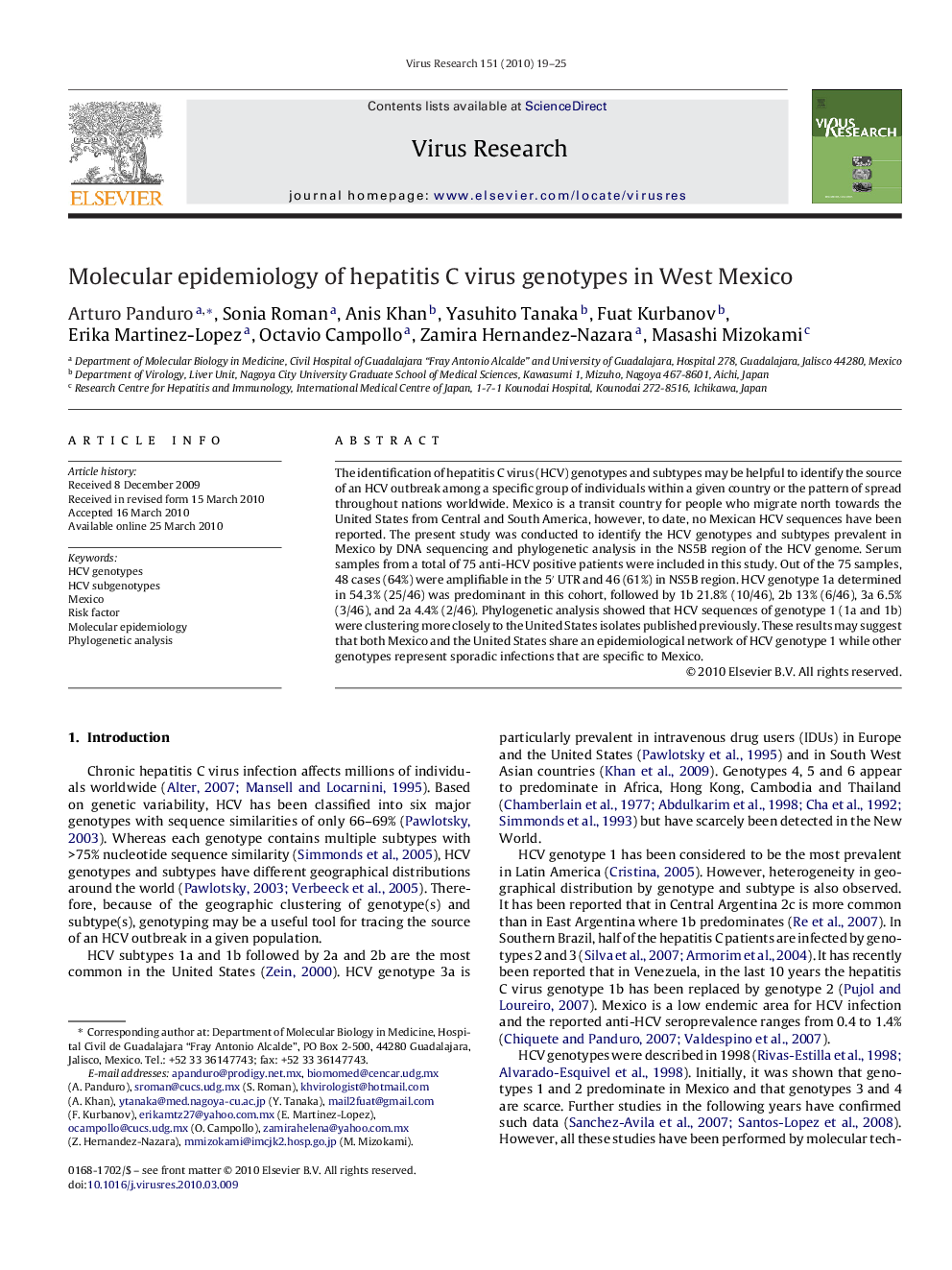| Article ID | Journal | Published Year | Pages | File Type |
|---|---|---|---|---|
| 3429402 | Virus Research | 2010 | 7 Pages |
The identification of hepatitis C virus (HCV) genotypes and subtypes may be helpful to identify the source of an HCV outbreak among a specific group of individuals within a given country or the pattern of spread throughout nations worldwide. Mexico is a transit country for people who migrate north towards the United States from Central and South America, however, to date, no Mexican HCV sequences have been reported. The present study was conducted to identify the HCV genotypes and subtypes prevalent in Mexico by DNA sequencing and phylogenetic analysis in the NS5B region of the HCV genome. Serum samples from a total of 75 anti-HCV positive patients were included in this study. Out of the 75 samples, 48 cases (64%) were amplifiable in the 5′ UTR and 46 (61%) in NS5B region. HCV genotype 1a determined in 54.3% (25/46) was predominant in this cohort, followed by 1b 21.8% (10/46), 2b 13% (6/46), 3a 6.5% (3/46), and 2a 4.4% (2/46). Phylogenetic analysis showed that HCV sequences of genotype 1 (1a and 1b) were clustering more closely to the United States isolates published previously. These results may suggest that both Mexico and the United States share an epidemiological network of HCV genotype 1 while other genotypes represent sporadic infections that are specific to Mexico.
